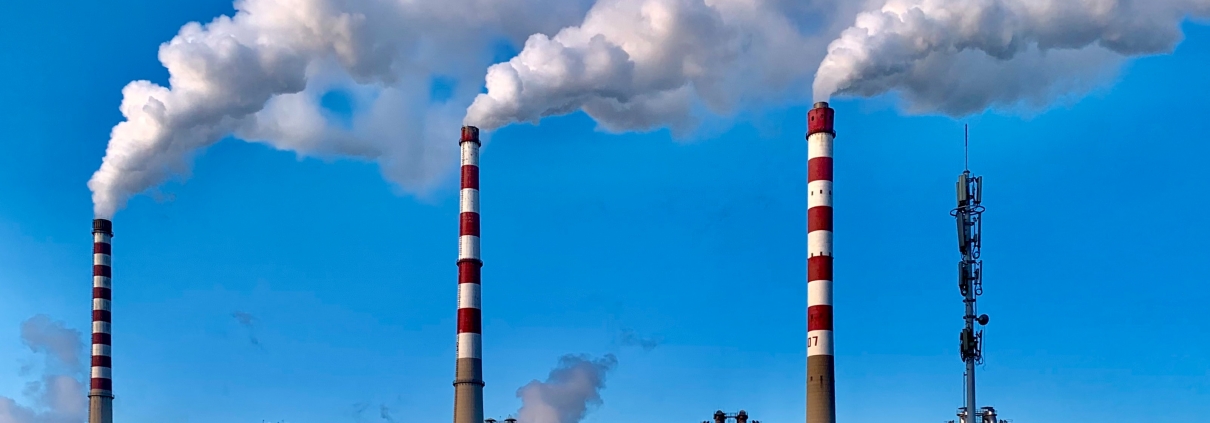Everything to know about Carbon Monoxide (CO)
Many are familiar with carbon monoxide (CO) as a deadly household gas. However, it is also a common air pollutant; one that we at Breeze Technologies consider vital to be monitored. While CO was not included on the World Health Organization’s (WHO) old 2005 ambient air quality guidelines, it is on their newest 2021 edition. Read on to find out more.
What is carbon monoxide?
Carbon monoxide (CO) is a colourless, odourless, and tasteless toxic gas. It is produced by the incomplete combustion of carbonaceous fuels like wood, petrol, coal, natural gas, and kerosene.
What are sources of carbon monoxide?
Outdoor sources of carbon monoxide include:
- Vehicle and combustion engines (diesel and petrol)
- Power plants
- Biomass burning
- Forest fires
- Volcanos
- BBQs
Indoor sources of carbon monoxide include:
- Incense
- Boilers
- Fireplaces
- Kerosene, propane, and gas heaters
- Ovens
- Cooktops
- Cooker hoods
- Central vacuum systems
- Tobacco smoke
Man-made emissions are responsible for approximately two thirds of the carbon monoxide in the atmosphere today; natural emissions account for the other third.
What is the health impact of carbon monoxide?
Upon entering the bloodstream, carbon monoxide inhibits the body’s ability to carry oxygen to organs and tissues. Heamoglobin is usually responsible for binding to oxygen molecules and carrying them through the human body. However, the bond carbon monoxide forms with haemoglobin is 245 times stronger than the bond usually formed by oxygen. Carbon monoxide therefore stays much longer bound to the heamoglobin, blocking the limited amount of possible “docking sites” for oxygen, leading to an undersupply of the body with oxygen. As such, extremely high concentrations can cause death. Infants, the elderly, and those with heart and respiratory diseases are particularly susceptible to carbon monoxide poisoning.
Symptoms of carbon monoxide poisoning at low concentrations include:
- Fatigue in healthy individuals
- Chest pain in individuals with heart disease
At moderate concentrations:
- Angina
- Impaired vision
- Reduced brain function
At higher concentrations:
- Impaired vision and coordination
- Headaches
- Dizziness
- Weakness
- Tiredness
- Flu-like symptoms
- Confusion
- Nausea
- Weak pulse
- Fainting
- Coma
Depending on the degree and duration of exposure, complications of CO include:
- Heart damage and life-threatening cardiac complications
- Permanent brain damage
- Miscarriage
- Fetal death
- Death
CO exposure has also been linked to ischemic heart disease (IHD) and its related symptoms.
What is the environmental impact of carbon monoxide?
Carbon monoxide affects the amount of greenhouse gases when it is emitted into the atmosphere. This change in atmosphere is linked to climate change and global warming, as land and sea temperature increases changing to ecosystems, increasing storm activity, and causing other extreme weather events.
On a global scale , CO does not have a significant environmental effect. However, near the site of emission, CO can also react with other air pollutants. It can either form harmful ground level ozone during the summer months, or it can oxidize to form carbon dioxide (CO2), an important greenhouse gas that helps trap heat in our atmosphere. At different levels, CO2 can also have serious air and health problems that may include:
- Headaches
- Dizziness
- Restlessness
- Paresthesia (a tingling feeling of pins or needles)
- Difficulty to breathe
- Sweating
- Tiredness
- Increased heart rate
- Elevated blood pressure
- Coma
- Asphyxia
- Convulsions
Just as with humans, CO has a consequential effect on living organisms because of the way it reduces an organisms ability to transport oxygen. Carbon monoxide exposure in other words impairs oxygen uptake by animals as well as humans.
How can carbon monoxide emissions be lessened?
The best way to reduce carbon monoxide emissions is to target its sources, which, by extension, would also combat the release of other harmful air pollutants. When it comes to indoor exposure, however, here are some steps you can take to protect yourself against carbon monoxide poisoning:
- Install carbon monoxide detectors
- Use gas/kerosene/propane appliances as instructed
- Keep fuel-burning appliances and engines properly vented
- Have vents, chimneys, heating system, and water heater regularly serviced by a technician
- Never use a generator or a portable gas stove indoors
For monitoring outdoor air pollution, Breeze Technologies offers a catch-all solution featuring our small, easily-deployable air quality sensors and intelligent Breeze Environmental Cloud for all your informational and analytical needs. By monitoring all major air pollutants, we provide a comprehensive baseline for the impact of your clean air interventions for a brighter, healthier tomorrow. Contact us today for more information!

 unsplash.com / Andreas Felske
unsplash.com / Andreas Felske
